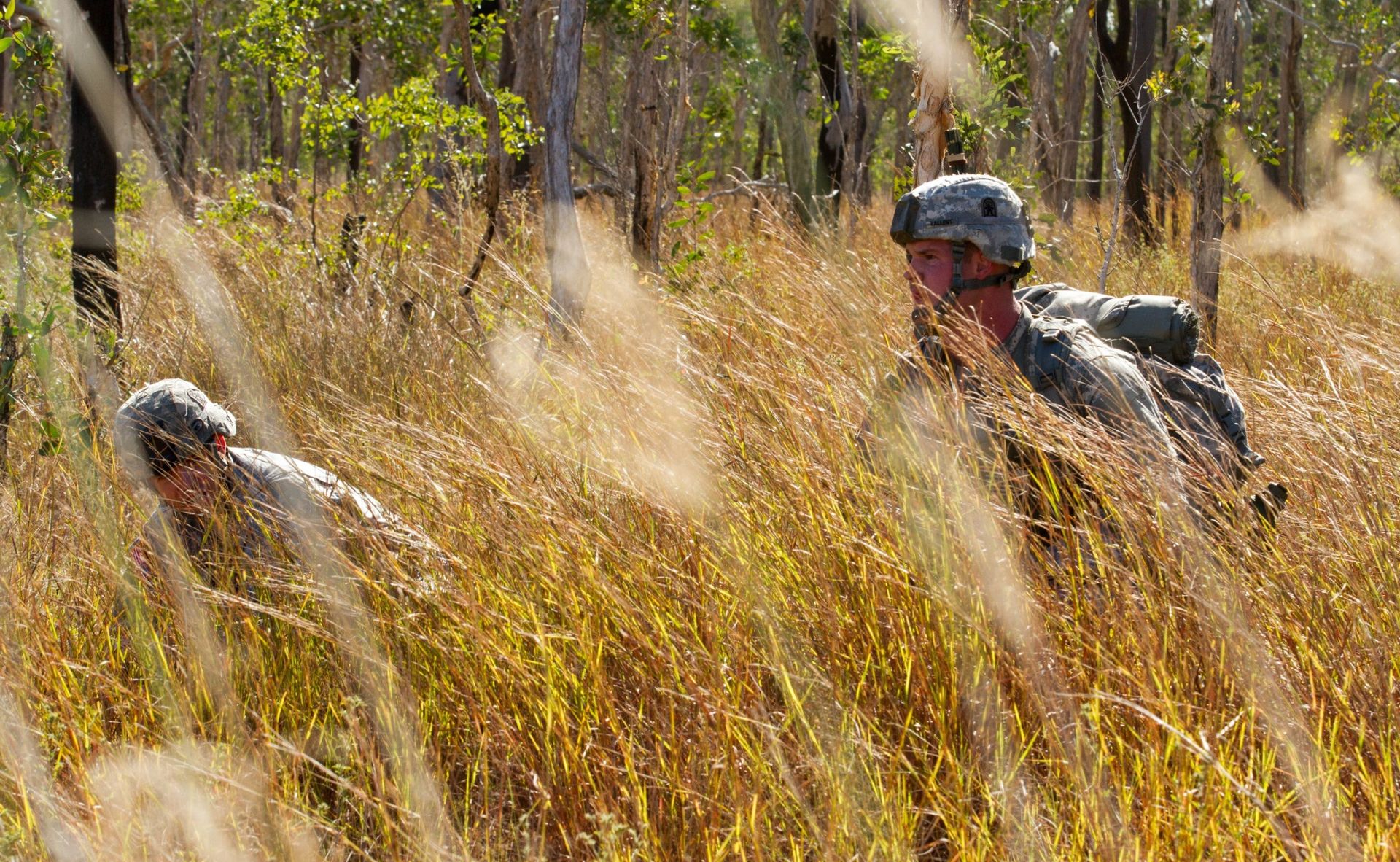More than 400 Army paratroopers, from the 4th Brigade Combat Team, 25th Infantry Division, parachuted from seven C-17 Globemasters onto Kapyong Air Field, Australia, as part of Exercise Talisman Sabre 15, July 8.
Talisman Sabre is a biennial exercise, which provides an invaluable opportunity for nearly 30,000 U.S. and Australian personnel to conduct operations in a combined, joint and interagency environment that will increase both countries’ ability to plan and execute a full range of operations from combat missions to humanitarian assistance.
“The first and foremost reason we are here today, is not only to deepen the already strong relationship between the U.S. Army and the Australian army, but between the Australian Defense Force, U.S. military and the United States of America and Australia,” said Brig. Mick Ryan, commander of the Australian 1st Brigade.
Major exercises like these train service men and women to enhance interoperability and employ skills needed for long range, high tempo and short notice missions around the world.
It builds the basics to planning, communicating, and deploying around the world, Ryan said.
“Those fundamental skills can be adapted across the board from humanitarian aid and disaster relief to high-end operations and deployments that our governments might want to engage in,” he said.
The U.S. military regularly deploys in joint operational environments, both in conflict and in peacekeeping missions. Being able to operate effectively with other nations and services can facilitate the accomplishment of key objectives.
“With the current operating situation around the world, being able to conduct exercises like this, in a combined operating environment, allows us the opportunity to showcase the capabilities in the Pacific region,” said Capt. Zachary Miller, the commander of C Company, 3rd Battalion, 509th Infantry, 4th Brigade Combat Team, 25th Infantry Division.
Talisman Sabre 15 preparations have been underway for several months, and the strategic air drop was one of the larger events of the central Queensland part of the exercise. Concurrent activities are occurring in northern Australia.
U.S. Army Pacific Exercise Commander Brig. Gen. Brian Alvin said it is always exciting to watch the culmination of months of training and coordination between the Australians and the United States.
“The beautiful thing about this jump was that the Australians flew two of their aircraft up to Alaska, joining five of the U.S. aircraft and after a 17-hour flight back, they enabled the U.S. Soldiers [to] parachute onto the airfield in Australia,” he said.
The U.S. and Australian military have a long history of working together and cooperation. The partnership has been forged out of mutual trust and respect.
“The relationship that the U.S. and Australians have is a wonderful thing and it is growing,” Alvin said. “I just spoke with the Australian chief of army and we believe that the partnership we have will only become stronger as time progresses.”
“We love working side-by-side with the U.S. Army, like we did in the First World War,” Ryan said. “It’s a relationship that we, the Australian soldiers, really treasure and it’s part of the ongoing nurturing of that relationship that we look forward to these events.”










